Mobile Flagship Phone Camera Overview 2020 H1: Still Picture Battle
by Andrei Frumusanu on June 18, 2020 11:00 AM EST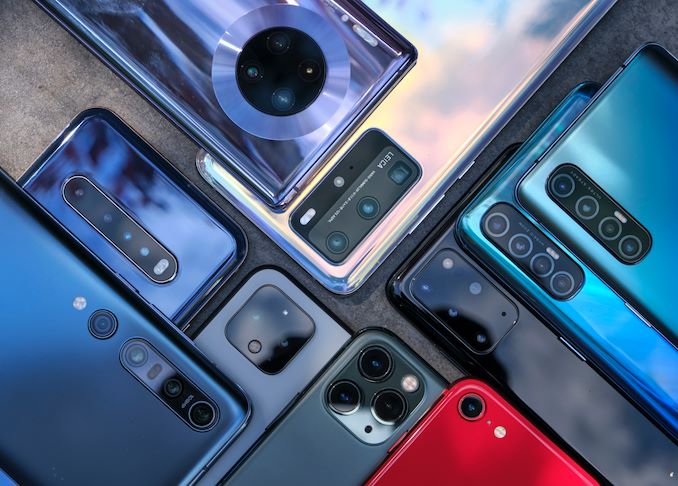
These days whenever you select a flagship smartphone, you generally get more or less the same fundamental formula no matter the vendor you chose. It’s a glass slab with a screen, and more often than not even the internal hardware powering the phones isn’t all that different, with just a few exceptions. Whilst most vendors try to differentiate themselves in their designs and ergonomics – some with more success than others – the one aspect where smartphones can still be very different from each other is their cameras.
This year we’ve seen smartphones with more variety than ever in terms of their camera setups. The last few years has seen an explosion of fast-paced innovation in the image capture abilities of smartphones, with vendors focusing on this last aspect of a phone where they can truly differentiate themselves from others, and try to one-up the competition.
We’re halfway through 2020, and almost all vendors have released their primary flagship devices – many of which we still had yet to cover in full reviews. This was a perfect opportunity to put all of the new generation devices against each other and compare their cameras systems to really showcase just how different (or similar) they are to each other. Today’s article is a battle-royale for smartphone photography, providing an apples-to-apples comparison across the most important devices available today.
The Phones - A Camera Overview
Before we go into the picture reviews and analysis of the different scenarios, it’s good to have a refresher of what the different phones sport in terms of their hardware, and what makes them stand out from the rest of the crowd.
Apple’s iPhone 11 Pro & iPhone SE ( Initial Review, SE Review )
Apple’s phones here represent the oldest devices in the round-up, being released last September. The iPhone 11 Pro was a major step-up for Apple in the camera department – both design-wise and hardware-wise. On the main camera sensor Apple still went with a regular 12MP Bayer sensor, employing 1.4µm pixels as its predecessors, but for the first time we see the use of dual-photodiodes which can serve as full sensor phase-detect auto-focus points as well as aid wider dynamic range exposures.
The main camera is joined by a 12MP telephoto module, as well as for the first time for Apple a ultra-wide-angle module that had been the great rage in 2019. All in all, Apple’s hardware wasn’t all that innovative as there’s nothing here that we haven’t seen before. Where the iPhone does differ is in its image processing, as the new A13 chip here is able to employ a stronger ISP and greater computing performance, allowing new features such as night mode and deep fusion image merging for better details.
In April this year, Apple also launched the iPhone SE. This budget iPhone uses the same camera hardware as on the iPhone 8, but takes advantage of some of the new image processing prowess of the A13 chip. It’s a simple single camera setup, so it’s a pretty straightforward design.
Samsung's Galaxy S20+ and Galaxy S20 Ultra ( Initial Review )
Samsung’s Galaxy S20 series also had a huge year in 2020 in terms of the camera hardware. Starting off with the new Galaxy S20+, Samsung here employed an unusual but innovative setup, using a primary module with a 12MP sensor with 1.8µm pitch pixels, with 26mm equivalent focal length optics. There’s a second 28mm equivalent focal length module on the phone which is very unusual. The sensor here captures up to 64MP pictures and also serves as the video camera for 8K recording. In essence, the phone has no real optical telephoto module, but rather uses the higher resolution sensor to be able to crop in with greater detail. Both these sensors are of the newer generation 1/1.7” size which allow them to capture more light.
The ultra-wide module also saw an upgrade to a bigger sensor and upgrades the pixel pitch to 1.4µm, however we lose resolution as this year it’s only 12MP.
The Galaxy S20 Ultra’s camera setup is quite extravagant in its size. With a 108MP 1/1.33” sensor with 0.8µm pixels it’s amongst the biggest sensors out there. Samsung opted to go for a 3x3 Nona-Bayer colour filter setup which is unique, and means that the sensor captures 12MP pictures in every-day scenarios.
The zoom module on the S20U is also huge: Samsung crammed in the IMX586 into a periscope telephoto module, resulting in a 4x optical zoom / 103mm equivalent focal length. Thanks to the 48MP sensor, this can be cropped a lot, achieving good quality up to around 10x zoom.
Google's Pixel 4 ( Initial Review )
The other 2019 device in this list is Google’s Pixel 4 phone. Google’s forte is clearly on the software side, showcasing some excellent image processing. On the hardware side, things are a bit simpler. We’re seeing a 12MP main sensor that’s seemingly quite older, as well as telephoto lens that’s actually a 43mm equivalent with 1.6x zoom, compensated by the fact that the sensor is a 16MP unit. Such an approach allows for better intermediate zoom level quality. What’s really missing here is an ultra-wide-angle module, and alongside the new iPhone SE, it’s the only other phone in this comparison lacking such a camera view.
OnePlus' 8 & 8 Pro ( Announcement )
OnePlus this year also had some big improvements in the camera department – at least the Pro version did. The OnePlus 8 Pro features amongst the first uses of the new Sony IMX689 sensor which is a 1/1.4” module featuring 48MP 1.12µm pixels in a quad-bayer colour filter layout (2.44µm 12MP binned). It’s amongst the more sensible choices and represents a compromise between the low-MP vs high-MP designs out there. There’s a 3x optical telephoto module coming at 8MP resolution, and the ultra-wide-angle actually adopts the IMX586 – last year’s popular sensor at 48MP (0.8µmnative / 1.6µm binned pixels).
The regular OnePlus 8 sees this same sensor on its main camera – in essence here nothing changed compared to the OnePlus 7 Pro except that it’s lacking a dedicated telephoto camera, instead using the main camera sensor in its 48MP in a crop mode to get to 2x magnification pictures with little quality loss.
OnePlus this year has seemingly worked a lot on their image processing, resulting in better quality than prior years.
Huawei's Mate 30 Pro & P40 Pro ( Initial Review, Announcement )
Huawei’s efforts over the last years in the P-series can be strongly attributed to sparking the recent boom in smartphone camera advances, having been the first to popularise high-megapixel sensor usage as well as the first to come to market with computational photography modes such as Night Mode. The company has really been pushing it in terms of both hardware and software.
The Mate 30 Pro was released late last year and uses a 40MP RYYB sensor – still a large 1/1.7” unit. There’s an 8MP 3x telephoto module for further reach, and the special thing about Huawei’s new phones is that the ultra-wide-angle is actually a 3:2 format sensor rather than the usual 4:3 aspect ratio, resulting in a different field of view than what you’re normally used to. This 40MP sensor is still very big and is the largest of this kind on the market.
The newer P40 Pro updates the main camera sensor to a new 50MP 1/1.28” unit, making this the largest camera sensor out there in the market. Each pixel is natively 1.22µm in dimensions and Huawei is binning it to 2.44µm as it’s a quad-Bayer colour filter. The odd thing here is that the P40 Pro by default takes 27mm equivalent cropped wide-angle pictures even though the lens module is actually 23mm wide. Even weirder is that the phone scales this crop up back to 12MP. Something to keep in mind for the evaluation section.
The ultra-wide-angle is the same as on the Mate 30 Pro, but the telephoto module is another periscope design, featuring 5x optical magnification with a 12MP RYYB sensor, making that also the first and only of its kind featuring such a colour filter array on a telephoto module.
LG's V60 ThinQ ( Announcement )
LG’s V60 is another dual-camera setup phone like the Pixel 4, with the difference being that LG opted to skip the telephoto instead of their pioneering use of ultra-wide-angle modules.
On the main camera, we’re seeing a new 64MP 1/1.7” sensor with 0.8µm pixels, binning down to 16MP for regular pictures. LG’s lack of a telephoto is compensated by the fact that the main sensor is of such a high resolution, and will actually capture a 16MP crop at 2x magnification while in the native resolution mode of the sensor, only losing a bit of dynamic range but still retaining near full resolution sharpness, making this in my view a quite well-working solution to the lack of a telephoto.
The ultra-wide-angle is a 13MP unit with a 1.0µm pixel pitch sensor and a 117° field of view (15mm equivalent).
Xiaomi's Mi 10 Pro ( Announcement )
Xiaomi was the first vendor to bring to market Samsung’s new 108MP HMX sensor. It’s of the same huge 1/1.3” size as that found in the S20 Ultra, but the difference here is that Xiaomi opts for a regular quad-Bayer colour filter array, meaning that the phone on this camera actually captures 27MP images natively, notably more than any other phone.
What Xiaomi also does on the telephoto end is also extremely interesting. Instead of going with a periscope module, they’ve managed to use a regular module design to achieve a 5x optical zoom module thanks to a small 1.0µm 8MP sensor. Xiaomi also thought of the issue of the quality gap between the focal ranges of the modules and bridged this with a traditional 2x optical zoom module coming in at 12MP.
The fourth camera is the ultra-wide-angle with a 20MP unit with 1.0µm pixels. Generally, Xiaomi’s approach to the camera setup seems extremely level-headed as it avoids many compromises we’ve seen from more ambitious designs such as in the S20 Ultra or other periscope camera designs.
OPPO’s Reno3 Pro & Reno3 Pro 5G
Although not OPPO’s flagship phones for 2020, the two units are interesting as they’re featuring similar camera setups configured by the same vendor, but coming in a MediaTek and Qualcomm SoC variants. The telephoto module and ultra-wides are the same on both, a 13MP f/2.4 2x optical with 1.0µm pixel pitches and 8MP f/2.2 13mm equivalent with 1.4µm pixel sensors.
The main sensor differs between the units. The Pro 5G comes with a smaller 1/2.0” sensor with 0.8µm pixels at 48MP, whilst the European Reno 3 Pro comes with a 64MP 1/1.7” sensor with the same pixel pitch size. Both do quad-Bayer binning to respectively 12 and 16MP resolution shots.
Reference Camera - Fujifilm X-T30
Over the last few years in our camera reviews there had always been a lot of discussions about the colour reproduction of various smartphones – which one was accurate and which wasn't? As an addition to this year’s reviews I had started to include a mirrorless camera to act as a reference point for this.
I’m using a Fujifilm X-T30 which uses a 26.1MP APS-C format sensor (3.77µm pixel pitch). The lens is a fairly standard and common 18-55mm f/2.8-4.
The pictures were captured in RAW format and processed in Capture One for manual recovery of dynamic range and exposure to as accurate as I could based on the scenes. Colours remained unaltered.
Goal of the Article
The goal of the evaluation is mainly surrounding the technical aspects that each smartphone vendor has adopted in their design. We’re looking to juxtapose the different camera sensor and optical technologies between the various vendors and try to come to some sort of verdict of the best implementations. We'll try to pin down the camera’s strengths and weaknesses, both from a hardware and software perspective.
The evaluation here is just based on technical landscape still picture photography. Portrait or video evaluations aren’t in the scope of the piece (for various practical reasons).


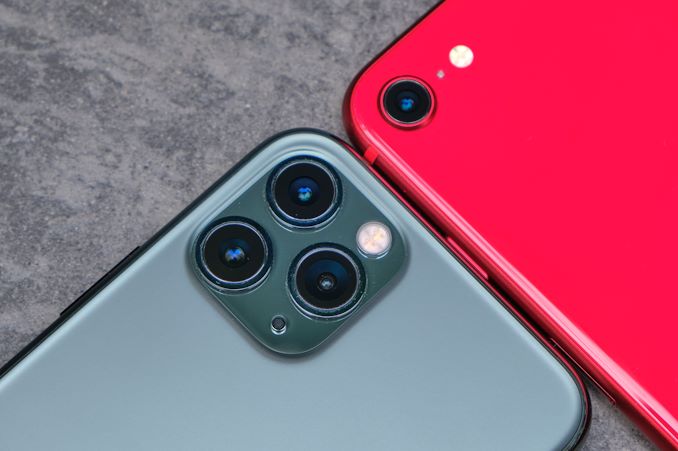
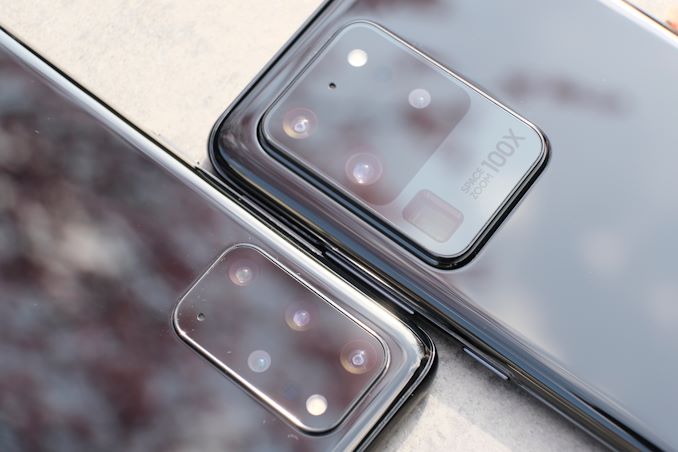


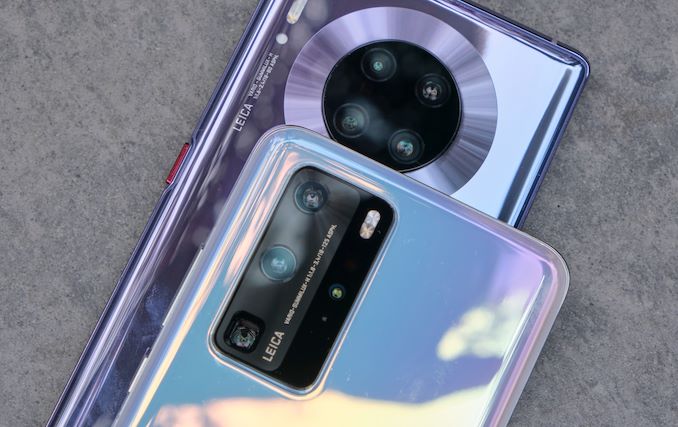

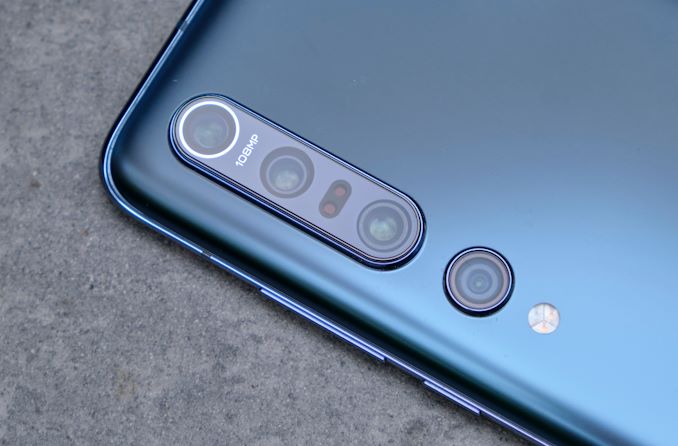










130 Comments
View All Comments
StormyParis - Thursday, June 18, 2020 - link
Thanks for a detailed balanced and interesting head-to-head.But, for me and the people around me, this increasingly misses the point: low- and mid-range phones have gotten so good that, off the top of my head, of the 20 people closer to me only 1 still buys flagships, and he's wavering. For the overwhelming majority of people, the issue with pictures is not the hardware, not the software, but the wetware. I had a guy pester me about the best cheap cameraphone... turns out he doesn't know what HDR and macro are.
I'd be interested in a comparison across budget lines (something I'm regularly doing on GSMArena, but that's in-lab shots) and across years, to know *if* paying more is worth it, before I start agonizing about which expensive phone to get.
bernstein - Thursday, June 18, 2020 - link
while true, i doubt this would be feasible. while there are just a few flagships there are a gazillion mid- & low-range phones.also, while cheaper sticker price wise, i doubt that they're that much cheaper overall. i tend to keep my iphone's 2-4 years at which point i sell them for around $250-500. that amounts to ~$15-20/month, which is about the same as my unlimited plan.
sure you can buy a sub $500 phone and keep it 2-4 years too, but if you want it to be as secure as possible (get current os releases) you have to be VERY careful which one to buy... fairphone and the iphone se come to mind, but not much else.
StormyParis - Thursday, June 18, 2020 - link
1- some low and mid-rangers sell a lot more than others. I'd think Redmi Note, Galaxy Axx, probably Oppo A9.2- It seems nowadays I'm keeping my $200 phones 3 years-ish too, so that works out to $6/mo. Are you counting AppleCare too ? I wouldn't leave a $1k phone uninsured, especially one with parts as expensive as Apple's (a XIaomi's battery and screen are $15each, and DIYable).
3- VERY careful indeed. As in: not the same as Jeff "dick pics and biz secrets" Bezos (an iPhone), and not the one that fell to the biggest ever Mobile malware campaign (iPhones, xCodeGhost) or has the cheapest open-*market price for hacks (iPhone).
My goal was not to launch the "is Apple worth the premium risk and constraints" debate, but I'm game anytime. I'm more interested in a both more general and more specific "are flagships worth it, picture-wise" article. Preferrably facts-based.
Speedfriend - Saturday, June 20, 2020 - link
I don't know if it is the same in the US but in the UK iPhone trade in price have collapsed. A friend wanted to upgrade his year old XS Max 512 to get an 11 for the camera. He paid 1450 for the XS Max and the value now is 450, £1000 fall in 1 year.The release of the SE has collapsed the prices of older iPhone too
TheGodFatherOfAnons - Thursday, June 18, 2020 - link
Pixel 3A, P30 Lite (GMS), P40 Lite (non GMS), Samsung A51, Xiaomis and Realmes without and with Arnova or BSG GCam are the kind of true midrange phones that could be chosen.The Huawei Lite versions of flagships are highly optimised, very akin to the Pixel 3A budget series for long now (people like their P10 Lite and P20 Lite too), which also have their revered Night Shot.
I am able to do astrophotography with my P30 Lite, and I cannot think of a single phone under sub $300 that can do it this well, including Pixels. My custom one-click Snapseed filters make any pictures equivalent to and even untouchable for flagships in plenty cases.
For an on-the-go shutterbug like me, Huawei's hardware and software do plenty justice in the camera department with Snapseed, since my DSLR is too inconvenient to carry and lacks software tricks for night.
iphonebestgamephone - Thursday, June 18, 2020 - link
Those are some godly snapseed filters.TheGodFatherOfAnons - Friday, June 19, 2020 - link
I can share my algorithms with you, which are far better than HDR+ on Pixel or whatever fusion Apple made. I have filters like DayObjects, DayPeople, NightObjects, NightPeople, Contrasty, DarkPop, LightNightMode and ExtremeNightMode.Here, I am sharing my P30 Lite tuned Snapseed algorithms as imgur albums (even though it would be useless on less neutral image processing phones):
DayObjects: https://imgur.com/a/3c0k6a0
DayPeople: https://imgur.com/a/tl9V2eD
NightObjects: https://imgur.com/a/fvwkOHr
NightPeople: https://imgur.com/a/lyP4r1U
Contrasty: https://imgur.com/a/coz3ECP
LightNightMode: https://imgur.com/a/DyfA6k5
ExtremeNightMode: https://imgur.com/a/5Un20xs
However, it took me about 1000-1500 samples taken from my P30 Lite to tune it accordingly with Huawei's processing, so settings can differ for other phonemakers so it will be useless. I was able to do this with my DSLR photography experience and a good amount of experience with photo editing (and photography adequate eye vision for colours).
iphonebestgamephone - Friday, June 19, 2020 - link
Ah the filters remind me of the various xmls for gcam. Denoise, detail, people, etc.TheGodFatherOfAnons - Friday, June 19, 2020 - link
I hope you can credibly call them "godly" now :PI suggest you try and implement them, if you like to give a true touchup to your photos, and tune it accordingly with whatever phonemaker algorithms you may have.
iphonebestgamephone - Friday, June 19, 2020 - link
Yeah those pics do look good, though ill have to make my own filters for my op7p. I currently use gcam with like 10 or so xmls.